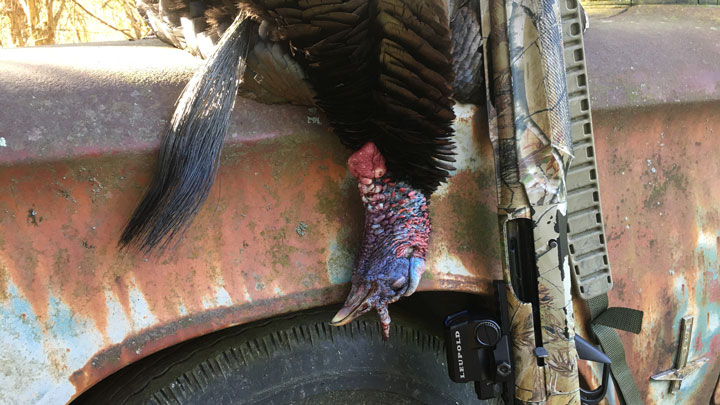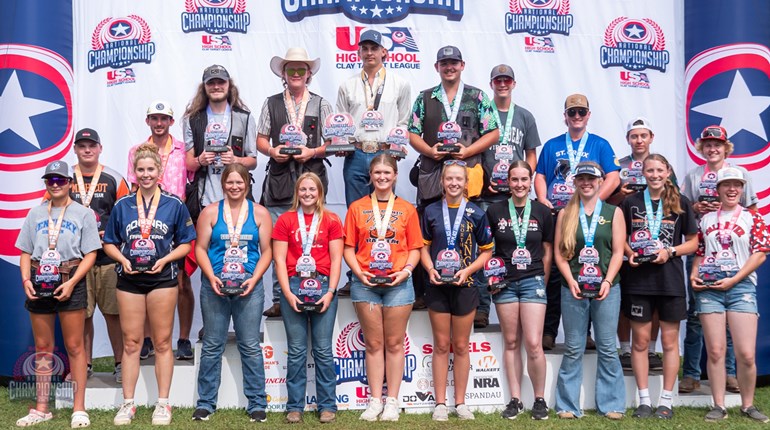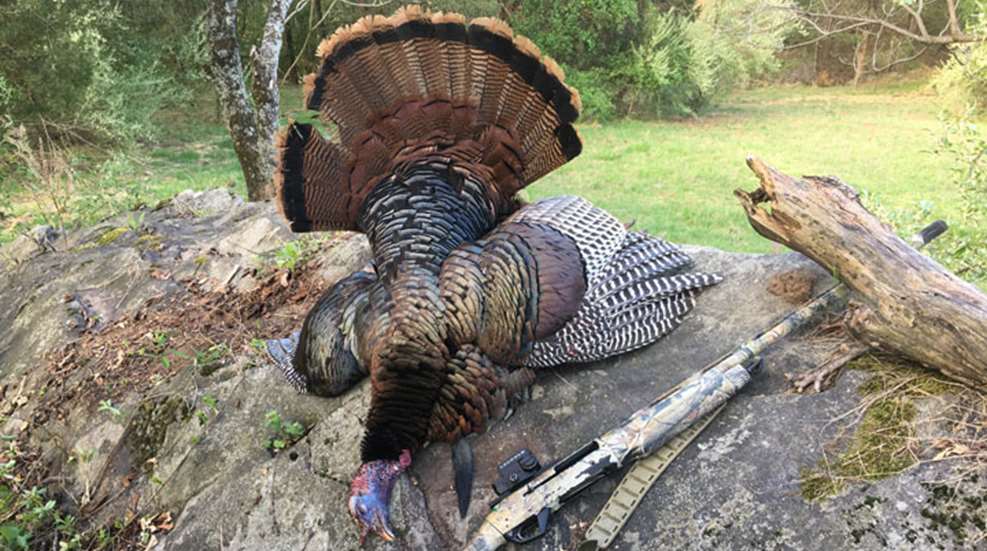
The tom emits one last thunderous gobble before gliding to the ground, just out of shotgun range but still in sight. You let out a series of yelps, but the last is interrupted by his response. He knows you’re there, and he’s coming—fast. You catch glimpses of him traversing the timber, both standing and falling. He’s clearly on a mission. Spotting the decoys, he stops abruptly. The tom sounds off and struts to impress and intimidate the plastic. It doesn’t work. He skulks forward, right into an open that you preplanned to take the shot—and you do. Checkmate.
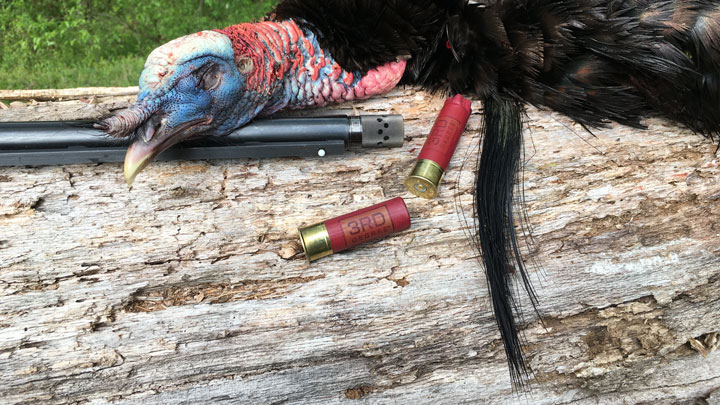
Few hunts are as enjoyable as when a boisterous long beard quickly—and absolutely—commits to your setup; however, for each such hunt, there are many others that don’t go so smoothly. The older the bird, the less likely he’ll throw caution to the wind and run in kamikaze style; that’s a move common to jakes and love-struck, two-year-old toms. More common is a game of cat-and-mouse that has you anticipating the gobbler’s next move and countering it. Sometimes, you’ll pick the perfect plan on the first attempt, while other times you won’t. Regardless, all are learning experiences that’ll help you bag the bird you’re pursuing, as well as those in the future.
Having hunted toms in my home state of Virginia and elsewhere for more than a quarter century, I have learned much about what it takes to consistently bag long-in-the-spur gobblers. But that education never stops; each year I’m afforded embarrassments by a tom or two, which only serve to increase my understanding. Most times they will lose our contest, but it takes time, careful planning, and frankly some luck to do so. Here’s a glimpse into what I’ve learned. Hopefully, it’ll help you bag big gobblers, too.
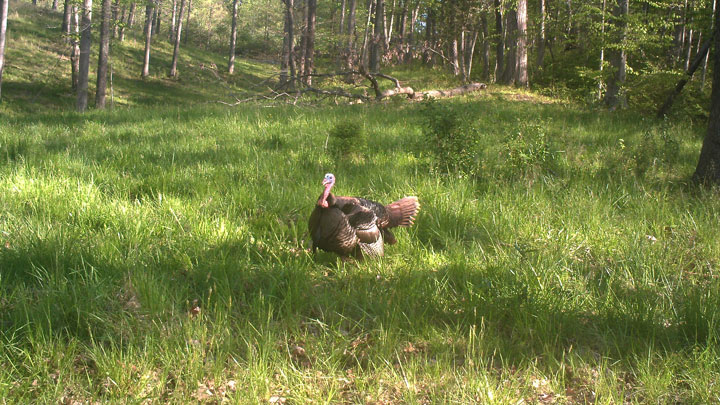
Setup
Setup is important for all turkey hunting, but it’s critical for stately birds. These gobblers, which can be accompanied by hens throughout the entirety of the season, have their preferred areas for roosting, strutting, dusting and eating, though the latter is less important during the mating season. You need to identify these locations using trails cams, scouting (without pushing the birds; use a binocular from a distance) and observation. I cannot stress enough that you must be where they want to be or go, be it a logging road, trail, small openings, etc.
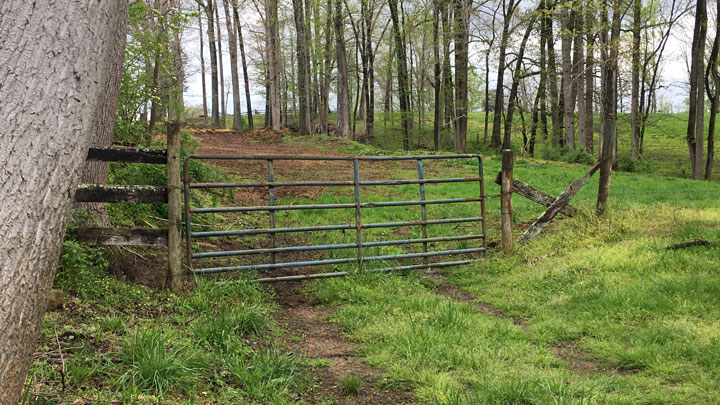
For especially difficult gobblers, noting the times and locations is important to formulating a plan to intercept them. Turkeys are creatures of habit; break the code and you’ll get an opportunity at them. At times, it’s taken me several days to a couple weeks of intermittent, before-work hunts to finally get the drop on boss tom. The longest was a three-year odyssey due to relentless pressure from rother hunters and poachers, as well as the gobbler’s propensity for always having an entourage of hens and crossing willy-nilly onto the neighbor’s posted property.
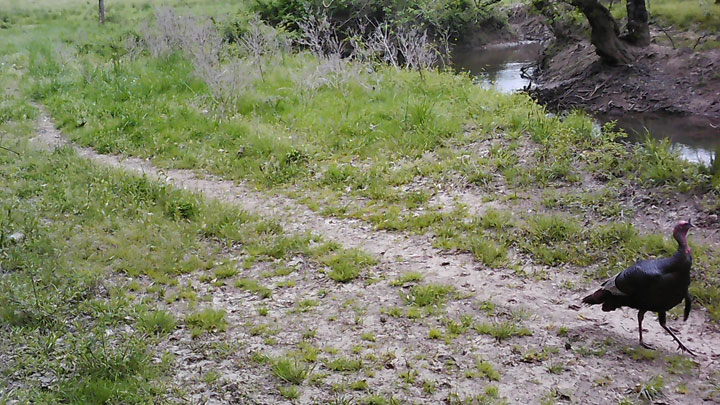
Once you’re on the “X,” you must choose your final position well. First, make sure there are no barriers preventing the bird from reaching you, such as wire fences, especially large fallen trees, etc.; they can and will hang up at these. You want an easy trek for an older bird. When hunting mountainous or hilly areas, I also prefer to be above the bird. I cannot count the number of instances in which I was below a “hot” gobbler that simply wouldn’t take a short jaunt downhill; however, when positioned above the same bird, he came in quickly and easily. There’s a reason for everything a turkey does, so if he’s not “following the script” you need to change it up.
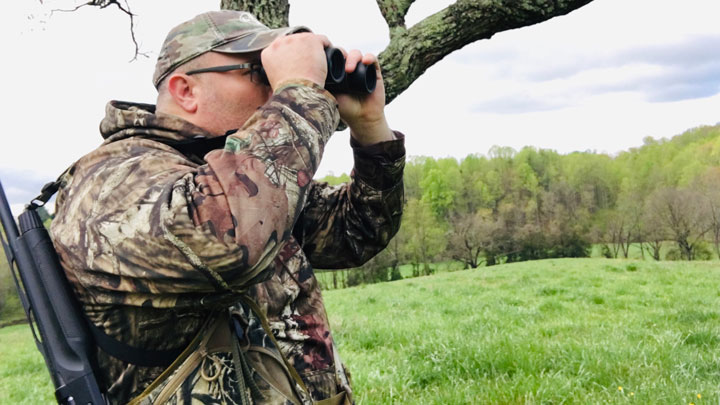
Decoys
Almost without exception, I use Primos’ Gobbstopper Decoy Jake & Hen Combo for the majority of my spring turkey hunting. I have done so for years. The duo has garnered the attention of many long-spurred gobblers, which ultimately led to their demise. But decoys aren’t magical, and a henned-up gobbler is unlikely—though it does happen, as I witnessed twice just this season—to leave his flock to seek a single mate. Furthermore, it takes time to deploy a decoy, and the movement can spook an incoming bird. If a long beard is close, don’t bother with the decoy.
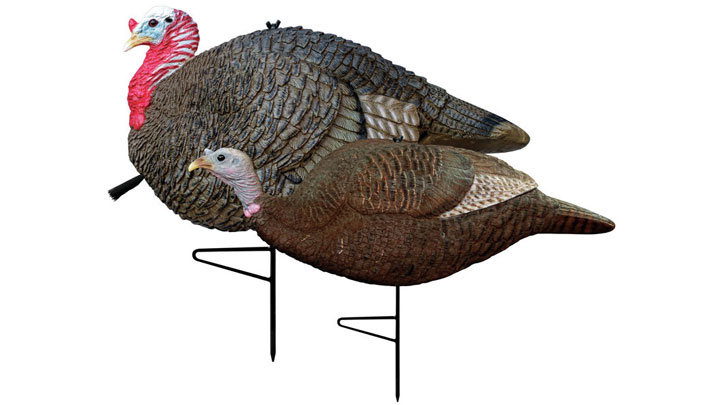
I also don’t use a decoy if I’m on the “X”—especially in the strut zone or any other high-use area. Since I’ll do minimal calling while there, I don’t want anything to draw suspicion. Instead, I wait patiently, knowing that, in time, the bird will arrive. Moreover, if the hunters I’m competing with are likewise using dekes, I’ve found that foregoing the decoy altogether improves chances of long beards coming in with minimal hesitation. Of course, this requires camouflage, a good hide and absolute stillness as they’re steadily looking for a hen, but it’s the most rewarding turkey hunting.
Whatever model you choose, be cognizant of the finish; I’ve had several gobblers stop suddenly once in view of some decoys, and high tail it out. The unnatural sheen became apparent as I shifted angles. That’s not the case with Primos, Dave Smith Decoys or Avian-X decoys, among others.
Patience
The axiom, “patience is a virtue” certainly applies to turkey hunting. It’s a contest of outmaneuvering, outsmarting, and outwaiting; whoever plays best, wins. Concerning the latter, you’ll find that dominant gobblers are frequently “henned up,” even at the season’s end. For instance, when I killed an especially tough bird during the last few days last year, the tom had no less than six hens with him. To bag a ladies’ man, you must give him time and space.
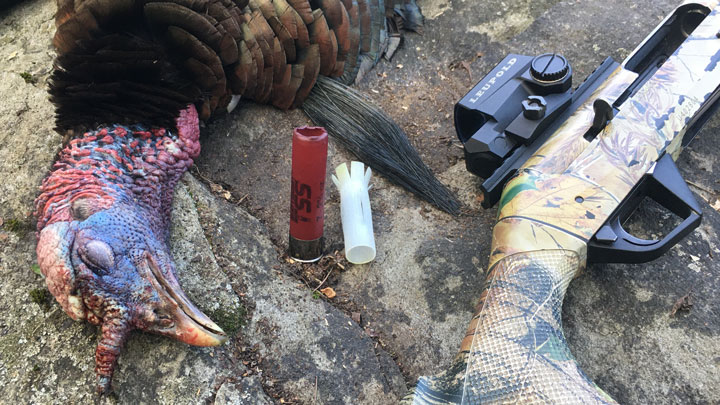
Provided that you have the time, rather than try to “make something happen” and inadvertently spook the gobbler, a better option is to allow him to tend to the hens without harassment. This can be challenging if you’re restricted to hunting before noon, such as is the case in Virginia for much of the season. I usually set up nearby, but just out of sight, and establish my presence via my preferred Primos The Karen mouth call. If the gobbler responds, he’ll be there in time. I just wait him out. It might be 20 minutes or two hours, but he’ll show. Loneliness is lethal.
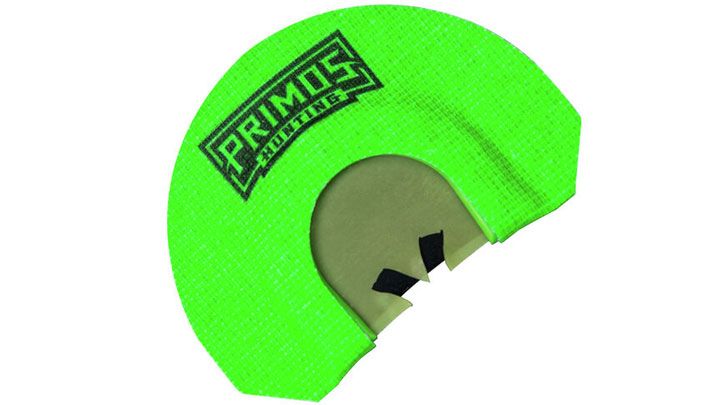
Know that, in general, gobblers will increasingly be cruising for hens after mid-morning. I’ve found the later, the better. Usually, if you get a solid response after 9:00 a.m., you’ve got a good shot at bagging the tom.
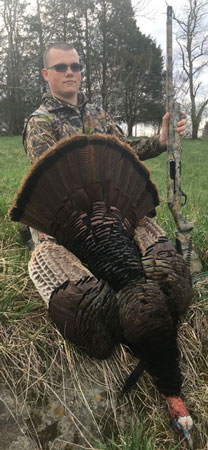
Be Aggressive
This seems counter to the previous section, but there are times that being aggressive can pay dividends. Consider this the “Hail Mary” approach. If season’s end is rapidly approaching, you’re hunting out of state or unfamiliar ground, or have limited time available to hunt then consider the best bets, chose one and swing for the fences.
For instance, if you’re dealing with the abovementioned ladies’ man, and entourage and time is short, find the general direction they’re going to go and use to terrain to get ahead of them. It might not be as glorious as calling one in, but it works at times. Similarly, you can use the terrain to close the distance to the gobbler for a shot. Know that these are low-odds moves. As such, I’d use them only in a pinch. Here’s an example:
Regardless of the setup, call, what have you, one particular Prince Charming evaded me for several years. Usually, the hens would cross on the neighbor’s posted property at the first call, and being on the “X” was no guarantee he’d commit; he’d learned much from run-ins with hunters and poachers alike. One day last season, he responded to my calls with ferocity, but wouldn’t come in with his hens present. It was the perfect setup, but not for him.
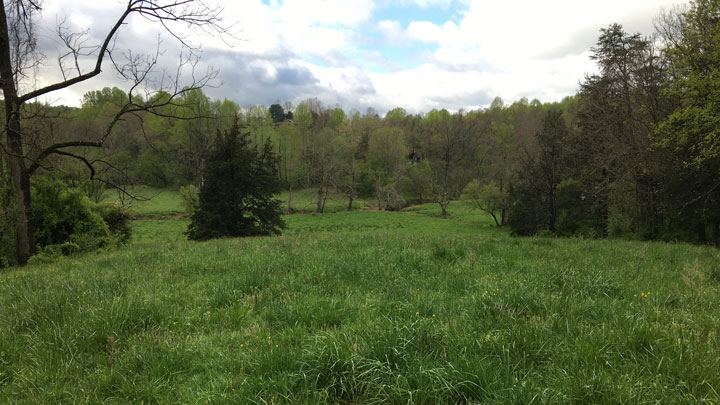
With work commitments requiring my hasty departure (as with other days), I decided to leave the blind a bit early and use the slight terrain features to approach their location, which I had noted on trail camera pictures and an accidental run-in during preseason scouting. As a creeped around the hill, I first caught sight of his fan, followed by his iridescent head. With no hens behind him, I sent the Federal 3-inch, 12-gauge 3rd Degree payload downrange, which ended the years-long saga. From this experience, I learned that, at times, you must be aggressive to be successful.
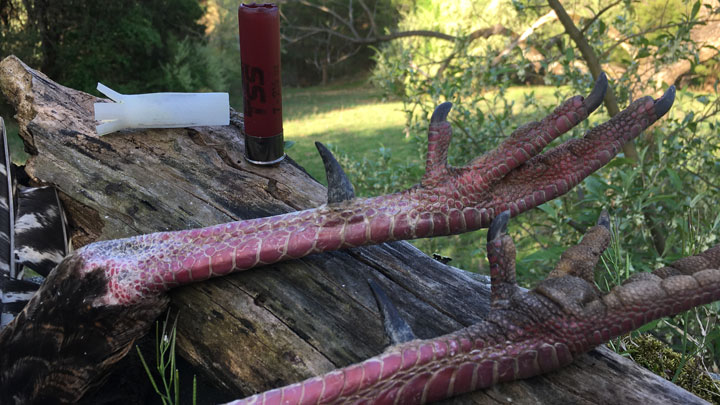
Another option if you have multiple long beards on the property is to try for one and, if unsuccessful initially due to stubbornness or hens, back out and try the other. Sometimes, one tom will lose its hens before the other or simply be more apt to come in. If the second bird is equally uncooperative, pick one, make a move or switch to patience mode.
Trophy toms—like big bucks—are killable, but you often need see the big picture, take an unconventional approach, be patient or even get aggressive. Mix these into your regimen of techniques, and that stubborn long-spurred bird will find itself in your vest heading back to the vehicle.
